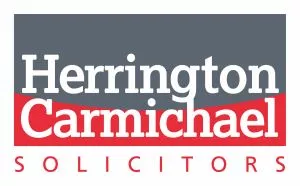What are the options for a commercial landlord when faced with non payment of rent or other breaches of a business or mixed use lease.
Likewise, if you are a Tenant, these are the steps that a Landlord is likely to be considering taking against you if you have not complied with your lease. We can assist you in resolving your concerns that led to this situation or in mitigating the claim against you.
Your options as a commercial landlord include:
- Assertive correspondence and / or negotiation
- Court proceedings – to recover both possession and rent arrears
- Court proceedings for rent arrears only
- Changing the locks
- Enforcement officer to seize goods
- Winding up or bankruptcy action
- Action against guarantors and former tenants
- Sub tenants
- Injunctions
- Court proceedings to remedy a breach of the tenancy agreement other than arrears of rent
A summary of these options is set out below. For further information on each of these topics please contact our specialist lawyers.
1. Assertive correspondence and / or negotiation
We can seek to achieve a resolution to the matter on your
behalf by assertive correspondence or pragmatic negotiation
depending upon the approach you wish to take and the most cost
effective route to achieving a successful outcome for you.
In many circumstances it is advisable to start the process with a "Letter Before Claim" and comply with the relevant pre action protocol in order to obtain an order for costs against the tenant in any subsequent court action.
2. Court proceedings to recover possession and rent
arrears
Often the standard method of achieving your objectives.
Can take many months and will incur legal fees (although costs are
usually recoverable in a successful case with a solvent
Defendant).
3. Court proceedings for rent arrears only
An effective method of recovering rent arrears when you
wish to keep the tenant in the property to preserve an income
stream. As above, can take many months and will incur legal fees
(although costs are usually recoverable in a successful case with a
solvent Defendant).
4. Changing the locks (peaceable re entry)
Quick, cheap and highly effective if carried out
correctly. Potential damages claim if carried out wrongly or
without justification. Damages landlord and tenant relationship.
Should only be carried out after taking legal advice.
5. Enforcement officer to seize goods
Quick, cheap and effective method of recovering a debt
from a commercial tenant if there are valuable items in the
property. Potential damages claim if carried out wrongly or without
justification. Damages landlord and tenant relationship.
6. Statutory Demand, Winding up or bankruptcy
action
A Statutory Demand is a notice that you intend to commence
insolvency proceedings if the debt is not paid within 21 days.
Winding up or bankruptcy action can be an effective method of recovering rent arrears. Often quicker than court proceedings.
Can only be used where debt is certain. Is a bluff; if tenant does not pay to avoid the process then it can create a problem as the landlord can be left with an insolvent tenant. Large court fee payable on the issue of winding up or bankruptcy action. Adverse costs orders if there is half a defence to the claim or insolvency action not appropriate.
7. Action against guarantors and former tenants
Useful if tenant is without money or insolvent. Only
applies in circumstances where the lease or the law allows a claim
against these other parties or there is a separate guarantee or
rent deposit.
8. Subtenants
A notice that the sub tenant should pay the Landlord
direct can be served upon subtenants at a property.
9. Injunction
A court action to obtain an urgent order from a Judge that
a tenant remedies a breach of the lease. Generally applicable to
breaches of the lease such as disrepair, alterations to the
property, insolvency and subletting unlawfully etc.
10. Court proceedings to remedy a breach of the tenancy
agreement other than arrears of rent
Other breaches of a lease where there is less urgency but
either the landlord wishes to evict the tenant or stop the
tenant's actions whilst keeping the lease alive.
Our services
We are experienced lawyers willing to apply the law with
considerable force and speed where necessary. We adapt our approach
to achieve your objectives. We are skilled in using alternative
dispute resolution processes such as mediation, arbitration and
expert determination where appropriate.
We can also negotiate a settlement particularly where that is the most cost effective approach or you wish to preserve an income stream once the tenant's behaviour has been corrected.
We are experienced in every conceivable scenario that arises in the landlord and tenant relationship and have considerable experience dealing with insolvent tenants in any form including: administration, liquidation (winding up), receivership, CVA (Company Voluntary Arrangement), bankruptcy and IVAs (Individual Voluntary Arrangement).
If the landlord does regain possession of the property then the tenant can apply to the Court to have the lease restored to him, known as relief from forfeiture. The Court's usual approach is to allow this providing the tenant (i) remedies the breach of covenant quickly and (ii) pays any rent arrears, damages and the landlord's costs.
The content of this article is intended to provide a general guide to the subject matter. Specialist advice should be sought about your specific circumstances.

